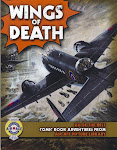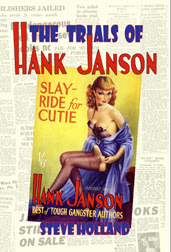 I originally posted the following on 16 July 2007:
I originally posted the following on 16 July 2007:I stumbled across the above strip in a 1936 issue of The Children's Newspaper. I've no idea who Poussin is, only that he also produced a strip for the children's supplement of the Scottish Daily Express in 1933 entitled 'Professor Chewso'. I'm guessing that Poussin worked for an agency that supplied various strips, puzzles and filler material to some of the many newspaper supplements published in the 1930s.
 Update: I've recently had a chance to dig through many more issues of the Children's Newspaper and can report that 'A Few Words From Theophilus' appeared irregularly between issues 888 and 934 (28 March 1936 to 13 February 1937). It was preceded by another strip from the same artist, 'Sim and Sam, the Tantalising Twins' which ran (again missing a few issues) between issue 871 and 887 (30 November 1935 to 21 March 1936).
Update: I've recently had a chance to dig through many more issues of the Children's Newspaper and can report that 'A Few Words From Theophilus' appeared irregularly between issues 888 and 934 (28 March 1936 to 13 February 1937). It was preceded by another strip from the same artist, 'Sim and Sam, the Tantalising Twins' which ran (again missing a few issues) between issue 871 and 887 (30 November 1935 to 21 March 1936). I'm still unable to find anything on the artist: Poussin is a genuine surname, French, as far as I can gather (there is a famous French Baroque painter by the name of Nicholas Poussin), but it's a very uncommon surname in the UK.
I'm still unable to find anything on the artist: Poussin is a genuine surname, French, as far as I can gather (there is a famous French Baroque painter by the name of Nicholas Poussin), but it's a very uncommon surname in the UK.I wonder if the name may have been used in its other meaning? A 'poussin' is a young chicken or 'spring chicken' and is used colloquially in the phrase "(s)he's no spring chicken" (meaning old). Could it have been used by a young newcomer to comic strips, signing his work to hint that he is a spring chicken? The 'Sim and Sam' cartoons are quite crude, almost stick-figureish; they make the 'Theophilus' strips from only a year later seem quite sophisticated in comparison.
If I'm right, we might even be able to presume a few things: 'Poussin' could be a contemporary of other young artists like Reg Perrott and Basil Reynolds who started out with agencies supplying work for the newspaper supplements of the early 1930s and possibly born around the beginning of the First World War (c. 1914-16). Maybe he disappeared into the world of advertising or illustration after these few strips.
Of course, the name could have been used with a hint of sarcasm: maybe the artist wasn't a spring chicken! Which puts us back at square one.





















































Looks a little like Lord Snooty!
ReplyDelete